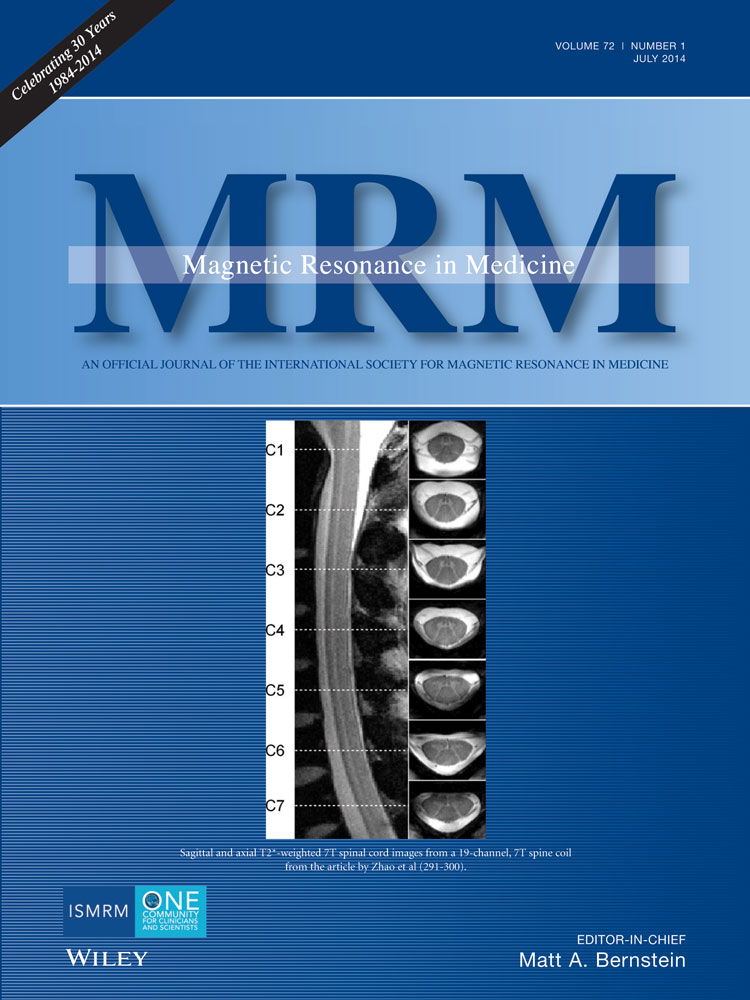Improved quantification precision of human brain short echo-time 1H magnetic resonance spectroscopy at high magnetic field: A simulation study
Abstract
Purpose
The gain in quantification precision that can be expected in human brain 1H MRS at very high field remains a matter of debate. Here, we investigate this issue using Monte-Carlo simulations.
Methods
Simulated human brain-like 1H spectra were fitted repeatedly with different noise realizations using LCModel at B0 ranging from 1.5T to 11.7T, assuming a linear increase in signal-to-noise ratio with B0 in the time domain, and assuming a linear increase in linewidth with B0 based on experimental measurements. Average quantification precision (Cramér–Rao lower bound) was then determined for each metabolite as a function of B0.
Results
For singlets, Cramér–Rao lower bounds improved (decreased) by a factor of ∼
 as B0 increased, as predicted by theory. For most J-coupled metabolites, Cramér–Rao lower bounds decreased by a factor ranging from
as B0 increased, as predicted by theory. For most J-coupled metabolites, Cramér–Rao lower bounds decreased by a factor ranging from
 to B0 as B0 increased, reflecting additional gains in quantification precision compared to singlets owing to simplification of spectral pattern and reduced overlap.
to B0 as B0 increased, reflecting additional gains in quantification precision compared to singlets owing to simplification of spectral pattern and reduced overlap.
Conclusions
Quantification precision of 1H magnetic resonance spectroscopy in human brain continues to improve with B0 up to 11.7T although peak signal-to-noise ratio in the frequency domain levels off above 3T. In most cases, the gain in quantification precision is higher for J-coupled metabolites than for singlets. Magn Reson Med 72:20–25, 2014. © 2013 Wiley Periodicals, Inc.




